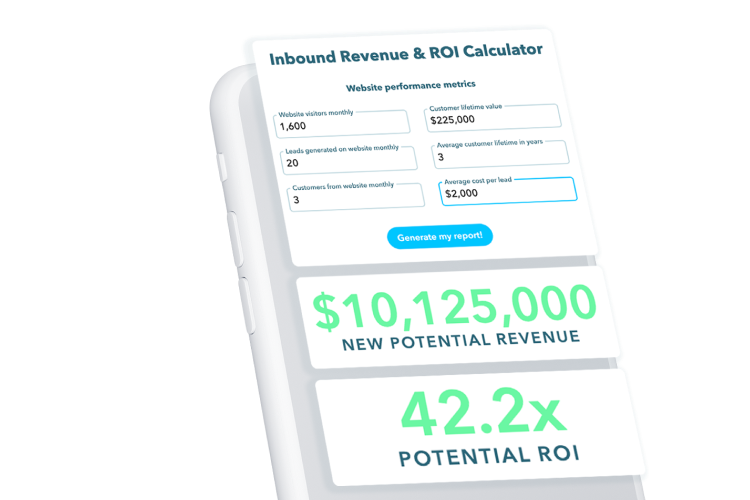 1,616 views
1,616 views March 18, 2025
March 18, 2025 1480 Views
1480 Views  6 min read
6 min readIn today’s competitive business landscape, demonstrating marketing efforts’ return on investment (ROI) is more crucial than ever. Despite this, many marketers find it challenging to showcase the value they bring to their organizations. This disconnect not only results in wasted resources but also hinders growth.
The key to achieving a strong ROI from your marketing investment lies not in pressuring your marketer but in optimizing their work processes, aligning their efforts with business priorities, and providing them with the necessary tools and support to excel.
This guide will outline actionable strategies that will enable you to maximize your marketing investment and empower your marketer to deliver tangible, measurable business value.

To get the most out of your marketing efforts and optimize your strategies, start by establishing clear and measurable goals that are Specific, Measurable, Achievable, Relevant, and Time-bound. These goals should directly connect marketing activities to business outcomes. For instance, focus on revenue-based targets like increasing qualified leads or boosting conversion rates, rather than vanity metrics like social media followers.
This ensures that your marketing efforts directly impact your bottom line. Key performance indicators (KPIs) like cost per acquisition (CPA) and customer lifetime value (CLV) should be tracked to measure progress.
Marketing and sales alignment is essential for optimizing ROI. When these teams work together, they can create a seamless customer experience, shorten sales cycles, and improve conversion rates, preventing wasted resources and missed opportunities that arise from disjointed efforts.
Consistent messaging, value propositions, and targeting criteria across both teams ensure that marketing spend directly contributes to revenue generation. Tools like HubSpot CRM, Salesforce, and Marketo facilitate lead-scoring systems, enabling sales teams to prioritize high-potential prospects based on their behavior.
Businesses can significantly improve their results by implementing regular marketing-sales syncs and shared goal setting. For example, HubSpot research, cited by ZoomInfo, indicates that companies with tightly aligned sales and marketing teams experience 36% higher customer retention rates and can become 67% better at closing deals.
Success can be measured through metrics such as marketing qualified lead (MQL) to sales qualified lead (SQL) conversion rates, sales cycle length reduction, and closed-loop reporting that tracks campaigns through revenue attribution.
To optimize marketing ROI, it’s crucial to strategically select channels based on their effectiveness for specific audience segments, rather than spreading resources thinly across multiple platforms. Utilize historical performance data and customer behavior analysis to identify high-performing channels and allocate budget accordingly. Implement attribution models that align with your sales cycle complexity to accurately track conversion value across touchpoints.
Leverage tools like Google Analytics 4 to visualize the customer journey and monitor channel-specific metrics. This data-driven approach enables continuous optimization of the marketing mix for maximum ROI.
Focusing on meaningful rather than vanity metrics is essential for maximizing marketing ROI. While metrics like page views, social media likes, or raw click numbers might look impressive on reports, they often fail to correlate with business outcomes. Instead, prioritize metrics that directly indicate conversion effectiveness and revenue generation.
Regular review of these value-based metrics enables continuous optimization of marketing strategies, ensuring resources flow to activities that directly enhance bottom-line results.
Your marketing team should prioritize nurturing existing customers and not just focus on acquiring new ones. Customer acquisition costs are significantly higher than retention costs.
To get the most out of your marketing budget, ensure your marketer uses cohesive, cross-channel strategies. Coordinating efforts across channels like social media, email, and content marketing can create a compounding effect that boosts overall performance and results in a greater return on investment. Cross-channel marketing platforms and multi-touch attribution models can help track performance and measure success.
Marketing automation can significantly enhance conversion rates and lower costs by automating personalized customer journeys that would otherwise be labor-intensive. This strategic approach allows for targeted communication by delivering the right message at the right time, based on individual prospect behavior and needs, instead of generic mass messaging.
Automation is particularly effective in reducing customer acquisition costs by qualifying leads before human interaction, preventing wasted sales team time, and ensuring consistent follow-up to prevent missed opportunities. Tools such as HubSpot Marketing Hub, Marketo, or ActiveCampaign offer comprehensive automation capabilities, including visual workflow builders, behavioral triggers, and robust analytics.
To measure the effectiveness of automation, track metrics like workflow conversion rates and sales cycle duration reduction. Continuously optimize sequences based on performance data for best results.
While targeting and technology are commonly prioritized, high-quality creative content and messaging are essential elements of marketing ROI. Even with advanced targeting and optimization, ineffective creative will underperform. Research indicates that creative quality can influence campaign performance by 50-80%, suggesting it’s a high-ROI marketing investment.
Quality creative fosters brand recognition, clearly conveys value propositions, and establishes emotional connections that motivate purchases. A consistent brand voice, visuals, and copy amplify these outcomes, strengthening brand identity and minimizing buyer journey disruptions.
Consider external creative expertise if internal resources lack specialized skills, campaigns have high reach but low conversion, or A/B testing shows diminishing returns. Track metrics like engagement and conversion rates by creative variant and time spent with content to measure the impact of creative investments on overall marketing ROI.
To significantly improve your marketing ROI, it’s crucial to strategically allocate your budget based on proven revenue impact instead of relying on historical data or industry standards. This performance-based model requires clear attribution between marketing activities and revenue generation, empowering you to adjust your investments responsibly and effectively.
Develop ROI forecasting models incorporating historical performance data, seasonal trends, and competitive factors to predict expected returns before committing resources. These models should include sensitivity analysis to account for market fluctuations and campaign variables. Having the discipline to scale successful campaigns while cutting underperforming initiatives is crucial.
Implement regular budget review cycles (quarterly) to evaluate performance against projected ROI and reallocate funds as needed.
The collaboration dynamics differ significantly between internal marketing teams and external partners. Internal marketers typically have deeper company knowledge and alignment with organizational goals but may suffer from limited external perspectives or specialized skills.
Agencies and freelancers bring fresh industry insights and specialized expertise but require more guidance in company-specific contexts. Effective collaboration with internal marketers often means providing clear business objectives while granting creative autonomy; with external partners, success depends on comprehensive onboarding about your brand, customers, and competitive landscape. Regardless of relationship type, establishing clear documentation of roles, responsibilities, and decision-making authority prevents bottlenecks and miscommunications.
Setting precise expectations and deliverables is fundamental to productive marketing partnerships. Beyond defining what will be delivered, establish when and how success will be measured. Create detailed project briefs that include project scope, specific deliverables with deadlines, success metrics tied to business outcomes, and communication cadence.
For instance, rather than requesting “social media management,” specify “4 LinkedIn posts weekly focusing on industry thought leadership with monthly reporting on engagement-to-lead conversion rates.” This clarity helps marketers prioritize effectively and align their efforts with your business goals.
Implement structured feedback loops that enhance performance over time by scheduling regular review sessions focused on results rather than activities. These reviews should examine what’s working, what isn’t, and why—using data as the foundation for decision-making. The most productive feedback sessions include quantitative performance reviews and qualitative discussions about market dynamics, allowing both parties to contribute insights that drive continuous improvement in marketing ROI.
Marketing ROI isn’t simply a reflection of your marketer’s capabilities—it’s equally dependent on the foundation you provide through structure, clarity, and support. Even the most talented marketing professionals struggle to deliver exceptional returns when operating with vague objectives, disconnected sales processes, or insufficient performance feedback. The most successful marketing relationships are true partnerships where both parties contribute to strategic direction and share accountability for outcomes.
Want better ROI from your marketing investment?
Start by improving how you work with your marketer, not just what you ask from them. Establish clear goals tied to business outcomes, share relevant customer and market insights, facilitate cross-functional collaboration, and create an environment where data-driven decisions precede assumptions or preferences.
By transforming how you engage with your marketing resources—whether internal team members or external partners—you’ll create the conditions for significantly improved performance and measurable impact on your bottom line.
Responsify specializes in bridging the gap between marketing activity and business results through strategic alignment and content, clear communication, and data-driven processes. Our team works with you to establish measurable goals, implement effective tracking systems, and create a collaborative environment for marketing success. We’ve helped companies across industries increase their marketing ROI through our structured approach to marketing management and execution.
Ready to transform your marketing ROI? Schedule a free 30-minute consultation with us to identify your opportunities for improvement and learn how our proven methodology can help you get more value from your marketing investments.
